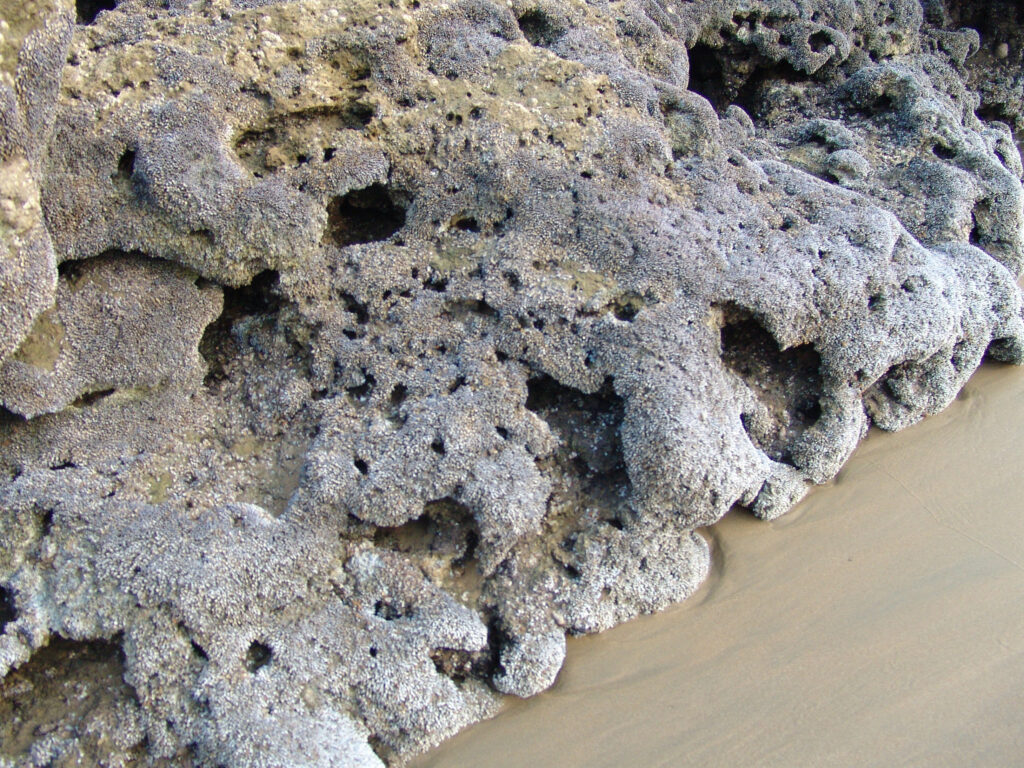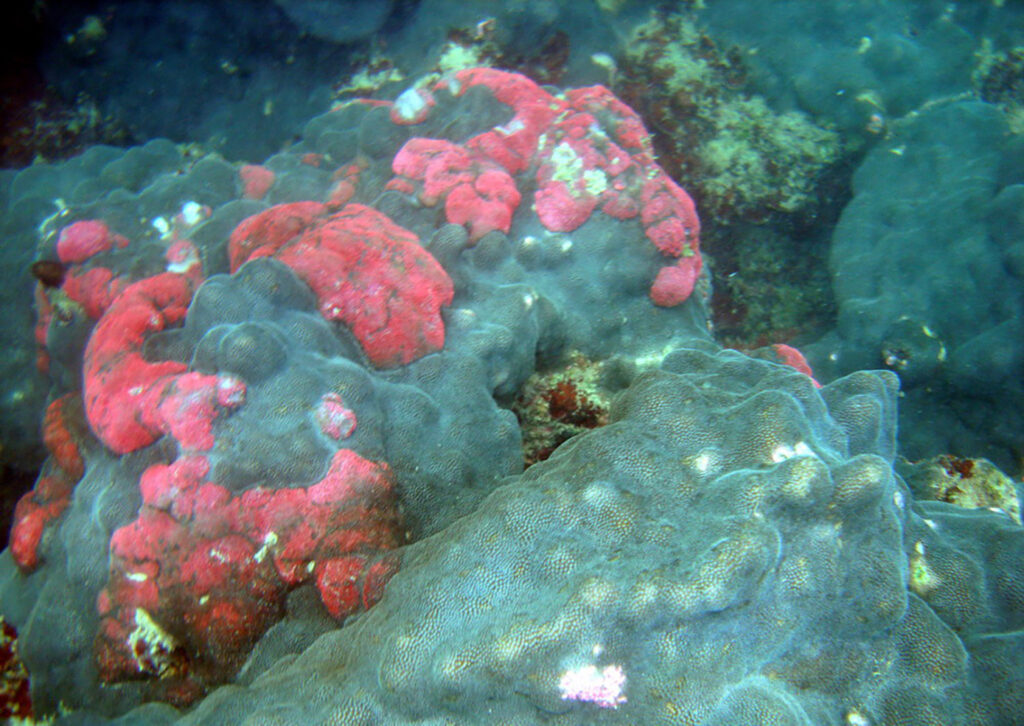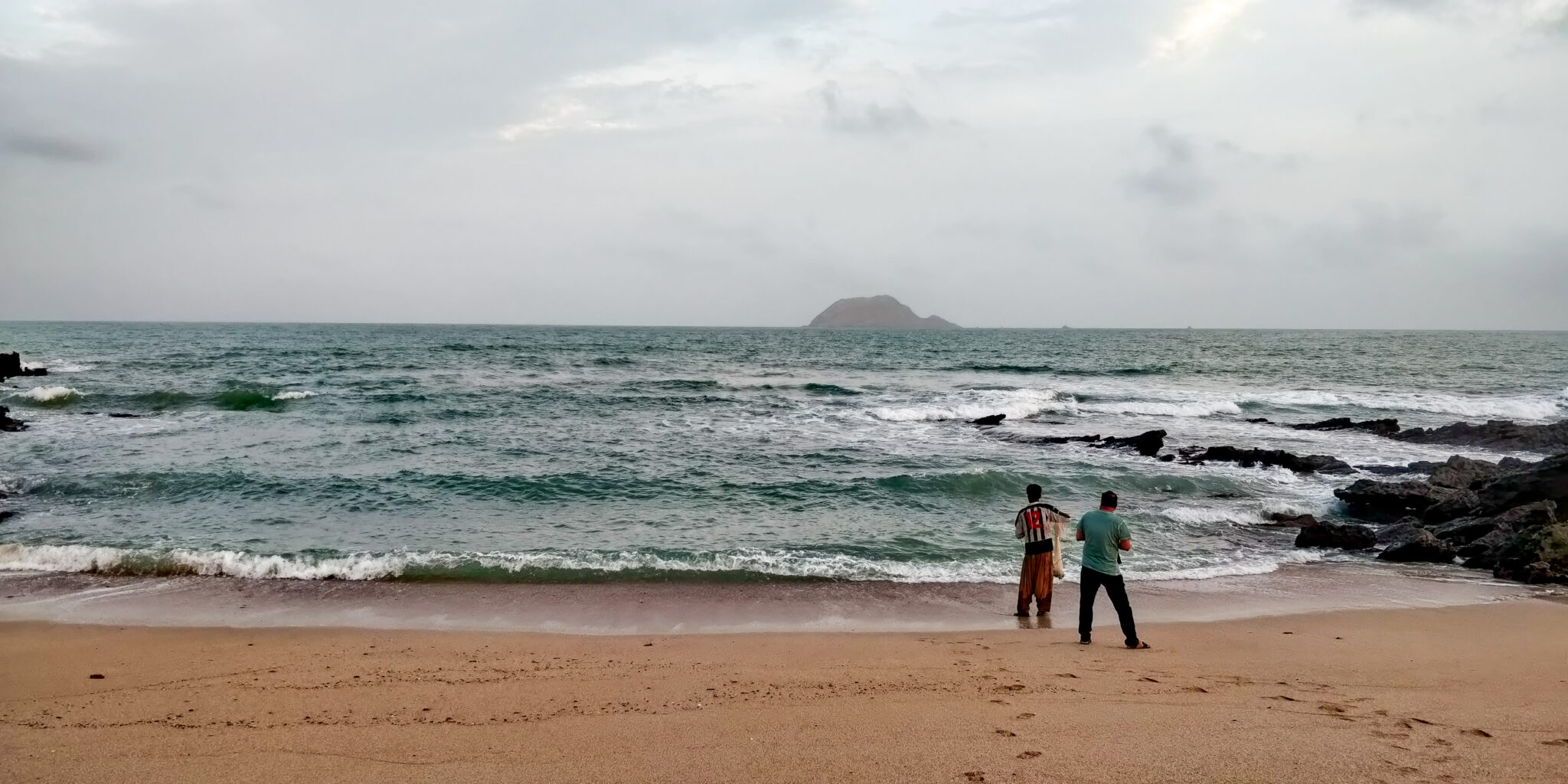In the last few years, fish captures have not been the same in Mubarak Village, in Pakistan’s coastal Sindh province. As coral reefs have declined, so have incomes for local communities, said Asif Baloch, a fisherman from the village.
“Fishing is not a sufficient source of survival. A year ago, our daily catch was enough to take to the market at the end of the day, but now we have to wait a whole week to have a good catch for sale,” the fisherman said.
Coral bleaching in Pakistan’s coastline is among the greatest threats climate change poses to this Asian country. Massive bleaching in recent years is altering the composition of fish communities, endangering hundreds of jobs in the area.
The catch of fish in Mubarak village, for example, decreased to around 10% of what it was twenty years ago. Currently, average daily wages for fishermen hardly exceed 6 US dollars, according to Baloch.
Bleaching has also impacted tourism in the area. Massive coral degradation in the coastal provinces of Sindh and Balochistan has forced government authorities to close down some of the main attractions on Pakistan’s coasts, such as scuba diving in Churna Island, located in Balochistan.
In spite of this, both activities play a significant role in Pakistan’s economy. Fisheries generate about 1% of the country’s GDP and provide jobs to around 1% of the country’s labor force, according to a report by World Food and Agriculture Organization (FAO).
Tourism, on its part, is responsible for 2.8% of Pakistan’s GDP, but it represents an even bigger share in Balochistan. However, as coral bleaching intensifies, these activities become vulnerable.

Corals live in a symbiotic relationship with a type of algae called Zooxanthellae, which helps them feed. Bleaching occurs when rising water temperatures force corals to expel the algae and starve. If the bleaching lasts too long, corals die.
Climate change has already increased water temperatures in the Arabian Sea, causing massive coral bleaching in Pakistan’s Balochistan province, said Moazzam Khan, marine expert with WWF Pakistan. Fish communities are some of the most affected by this.
In addition, human activities, such as fisheries and tourism, add pressure to these already stressed ecosystems. Some scientists suggest stricter protection from marine conservation areas is needed in Sidh’s coastal ecosystems to help corals recover.
At a global level, coral reefs are some of the most threatened ecosystems due to climate change. Under a 2 ̊C warming scenario, up to 90% of the world’s reefs could be degraded, under a 2013 study published in the journal Nature.
Threatened jobs
In Pakistan’s coastal areas, around 400.000 fishermen and their families are dependent on marine resources for their livelihood. When corals bleach, the whole ecosystem declines, and fewer resources end up available for fishing.
Mubarak village, locally known as Mubarak Goth, has faced some of the most serious impacts. Most of its residents go to Churna Island for fishing, where massive coral bleaching was recorded in 2020.
The village —composed of around 5.000 people— lacks proper access to basic needs for its residents, presenting problems with fresh water, electricity, schools, and health centers.
In response, locals adopted destructive approaches like trash fishing, which refers to catching very small fish with small nets. This approach prevents seeds or juvenile fish from reaching adult size and breeding.
After the government banned these illegal fishing practices, many fishermen gave up their traditional profession and started working in tourism.
But massive tourism activities caused severe damage to the already climate-stressed corals in Churna. After extensive evidence of coral degradation, the Pakistan Navy banned scuba diving in the area.
Currently, only a few certified tourism companies are allowed to function here, leaving people from local communities who started jobs in tourism without permits for tourism and without means for fisheries, Baloch said.
Bleaching has had a “devastating” effect on local communities, added Dr. Fehmida Firdous, a marine researcher at Karachi University. Along with her team, she launched awareness campaigns about the importance of corals in the localities of the Churna and Astola islands.
Like other natural ecosystems, corals can repair damage to their ecosystems independently, but it takes decades and efforts from local communities.
During this process, it is mandatory to maintain the temperature between 23-26 ̊C, a high concentration of Oxygen, and less waste material. The researcher explained that local communities could eventually manage this stable environment with education and training.
Pakistan’s impacted corals
Pakistan’s coastal line is among the many seas that have a vast coral ecosystem. Climate change and other human activities now threaten these reefs.
Back in the 1980s, Pakistan’s shorelines were thought to be unfit for the growth of corals, according to research published by UNEP. However, rich coral ecosystems were discovered in 1995 in Churna Island, with Hump, Leaf, and Star reef (Acropora) formations. Even more, they were discovered later in the rest of Balochistan.
These corals are now under stress in Astola Island and Churna Island, where the threat of extinction is prevalent. Scientists say that the primary cause of coral bleaching in Churna is the rise in Sea Surface Temperature (SST).
When sea levels rise due to climate change, corals end up on deeper water levels than where they grew. As more water covers the reefs, they start to receive less sunlight, compromising their growth.
Climate change also causes the water temperature to rise, forcing the corals to expel the algae that help them feed. This is a major driver of coral bleaching around the world.
According to Zubair Siddiqui, a senior climate scientist at Pakistan Meteorological Department (PMD), the average water temperature in Pakistan from June to October 2019 was 27 ̊C. This is a slight increase from ideal conditions since the average temperature for normal coral growth is 23-26 ̊C.
Storms also play a role in degrading corals. The observed increase in water temperature can also lead to more severe tropical storms. The sea waves in the monsoon season can break coral branches and overturn coral colonies.
In Churna and Astola islands, an additional problem is ocean acidification since their shores are surrounded by a thermal power plant, oil refinery, and a single-point mooring system for marine cargo transportation. Additionally, another coal-fired power plant in Gwadar and a Liquid Petroleum Gas (LPG) terminal near the coastline is under construction.
The seawater near the islands absorbs CO2 emissions generated by these fossil fuel activities and becomes more acidic. These acidic conditions further degrade the structures of coral reefs.

Saving the reefs
Some initiatives have emerged to protect Pakistan’s corals in the coastal Balochistan and Sindh provinces.
The Balochistan government, for example, is working on an artificial reefs project created out of cement and rods to preserve the island’s natural environment. They are placed at several locations essential to maintaining biodiversity.
Nadeem Khan, director of fisheries Balochistan, is heading this project along with conservation organizations. He is confident that the strategy will work in reducing stress from human activities, such as fisheries, to the already climate-stressed corals.
Artificial reefs are widely used worldwide as a fishery management tool to restore habitat for marine creatures. According to Dr. Sato of Hokkaido University Japan, the fish catch in artificial reefs can be increased by 10 kg per cubic meter.
But other efforts have also been implemented to protect these ecosystems. Firdous, on her part, launched an awareness campaign in local communities, urging them to protect the corals so they can still have access to fishing resources.
With her team from Karachi University, she handed over posters and pamphlets to educate the villagers about the importance of deep-sea corals for the marine ecosystem and the illegal and misguided fishing practices that play a role in coral destruction.
The region’s provincial government should declare Churna a Marine Protected Area (MPA) immediately, Firdous recommended. This would help protect biodiversity and the future of fisheries in Pakistan
Without intervention, local communities will continue to suffer the most serious impacts of coral bleaching, said Dr. Firdous.
The story was originally published at Climate Tracker in July 2021 and shared with the permission of the author.

Saadeqa Khan is the founder, CEO, & Editor-in-Chief of Scientia Pakistan. She’s a member of the Oxford Climate Journalism Network (Second Cohort) and NASW. Saadeqa is a fellow of NPF Washington, The Falling Walls Foundation, and the Science Journalism Forum. Saadeqa has won several international journalism grants and awards for her reports.

